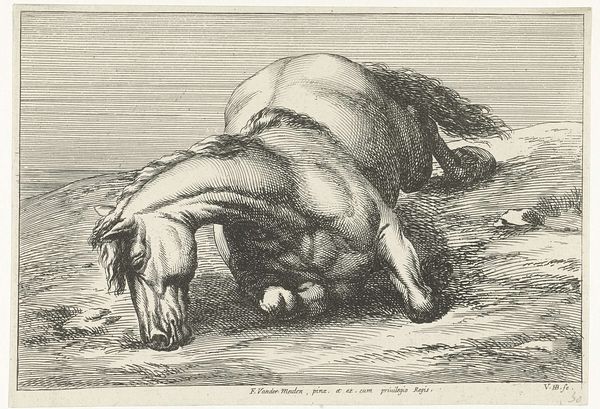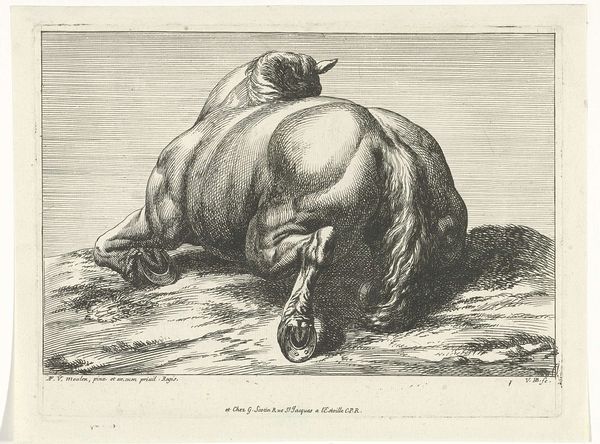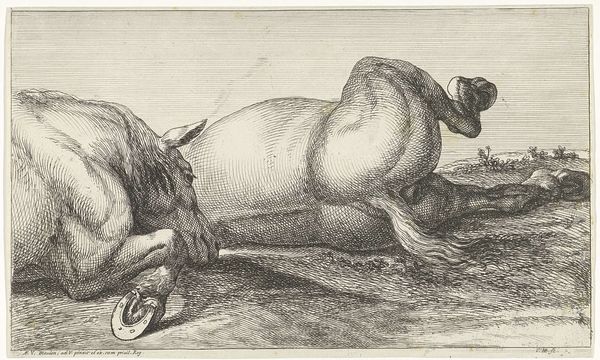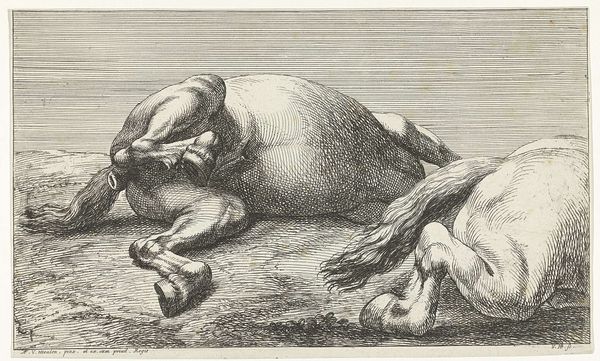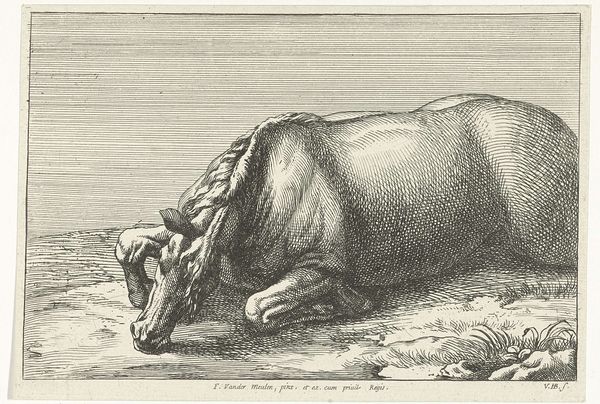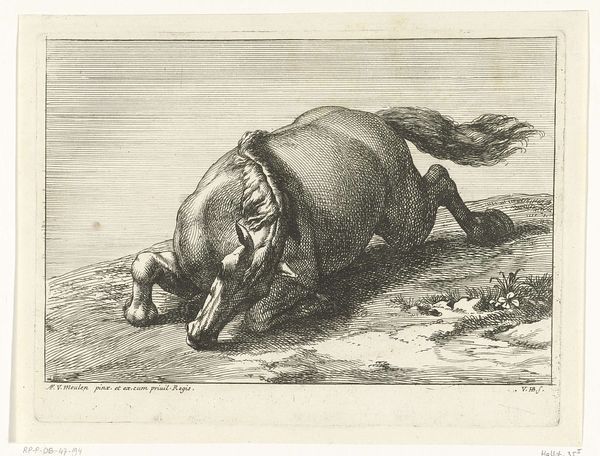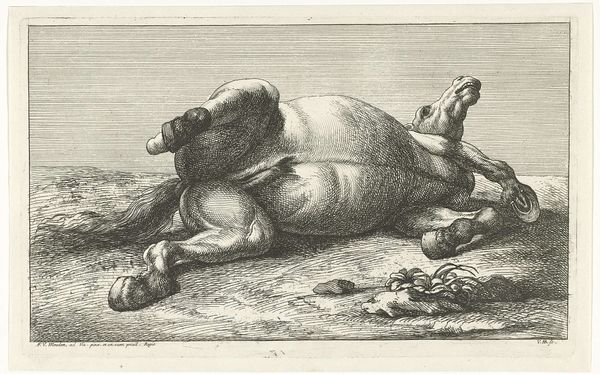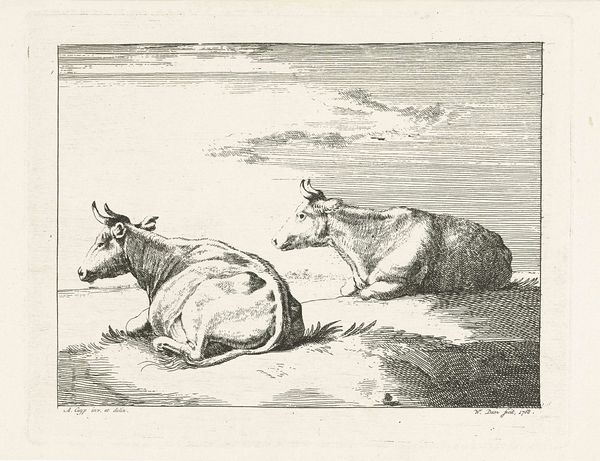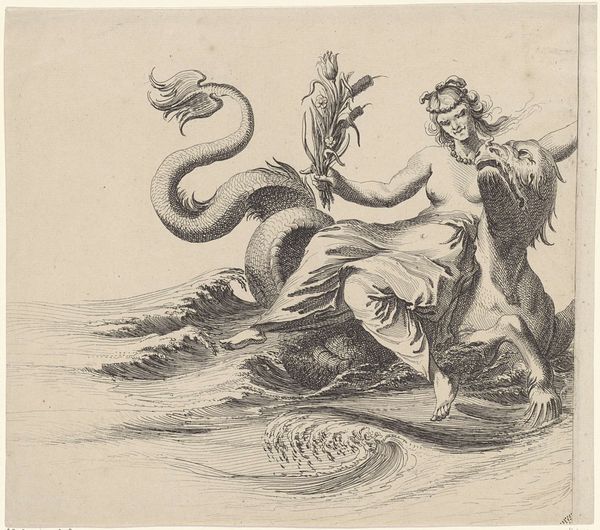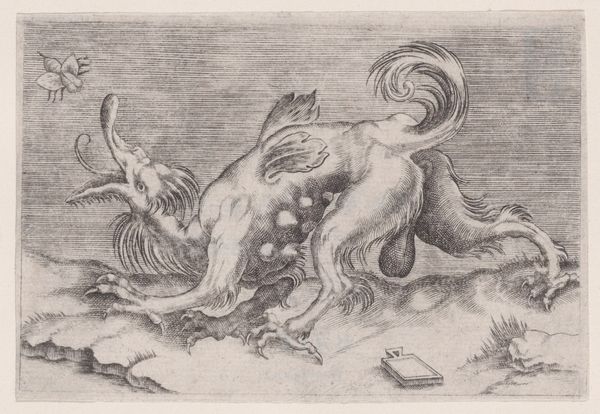
etching, engraving
#
animal
#
etching
#
landscape
#
engraving
Dimensions: height 211 mm, width 345 mm
Copyright: Rijks Museum: Open Domain
Editor: Here we have "Fallen Horse," an etching and engraving made sometime between 1674 and 1733. The artist is Jan van Huchtenburg. I find it quite bleak and... unsettling. It's just a single, dead horse, taking up the entire frame. What stands out to you when you look at this work? Curator: It's important to remember the social context for a piece like this. War imagery, and particularly horses, held a specific, potent significance. Jan van Huchtenburg, along with contemporaries, had a fascination for battle scenes. These engravings found their audiences amid political instability; engravings such as this served as documentation of conflict, but more significantly, glorified war, framing violence within notions of heroism. Have you considered how this image might function beyond simple representation? Editor: That's interesting. So, it's not *just* a dead horse? What does the depiction of death say, within this frame of heroism? Curator: Well, depictions of war don’t necessarily condemn it. Instead, by portraying a single fallen animal—presumably in the heat of battle—Huchtenburg focuses our attention on the *cost* of heroic endeavors, almost in passing. It's a landscape, remember, so consider where *we* are placed as viewers. Are we positioned as bystanders, safely observing from a distance, or are we down in the dirt with the animal? Editor: I see what you mean. The low perspective definitely puts us *there*. So this image then, served not just to glorify but almost desensitise viewers to violence and the loss of life. Even that of an animal. That's disturbing! Curator: Precisely. The print market shaped artistic production. Glorification of war often paid more than denunciation. But that opens a space for critical reflection today, doesn’t it? Editor: Absolutely. It’s unsettling how a seemingly simple image reveals so much about historical attitudes toward war and its cost. Thanks for illuminating that. Curator: My pleasure. It is a reminder that images don't exist in a vacuum. It's our job to situate them.
Comments
No comments
Be the first to comment and join the conversation on the ultimate creative platform.
